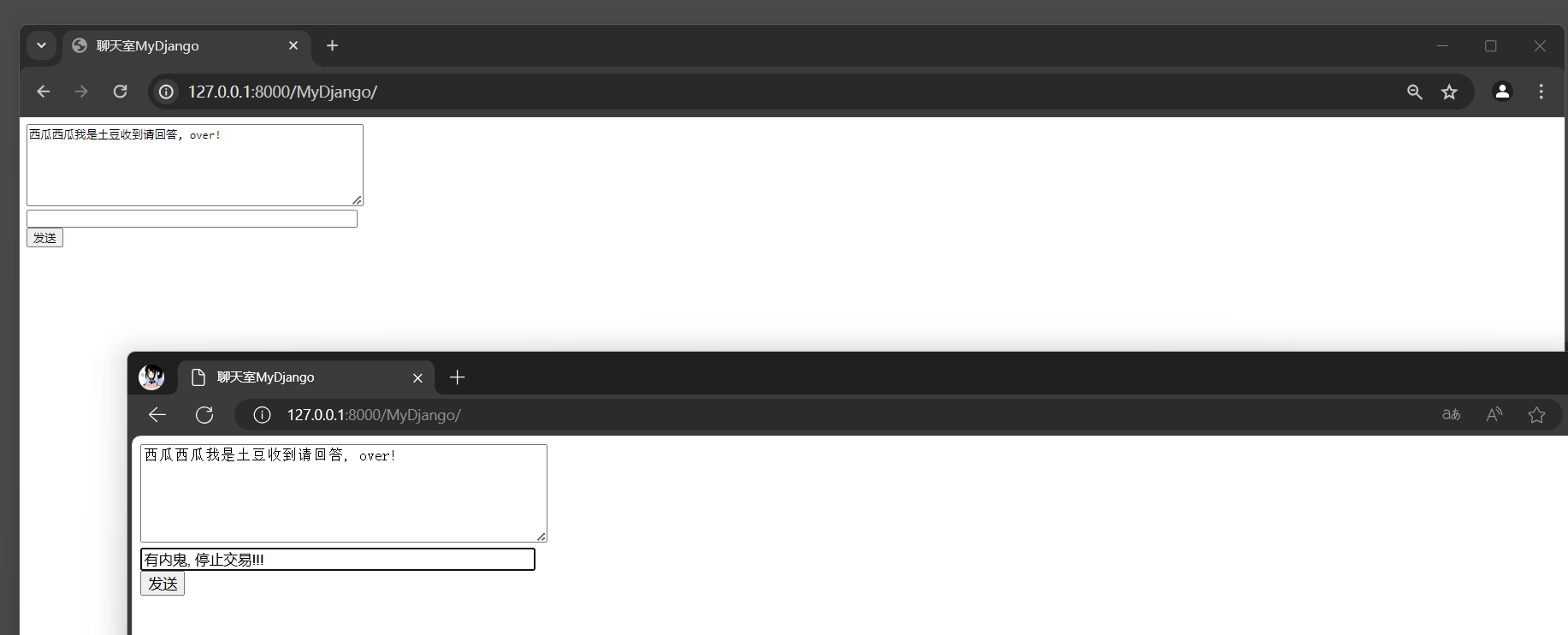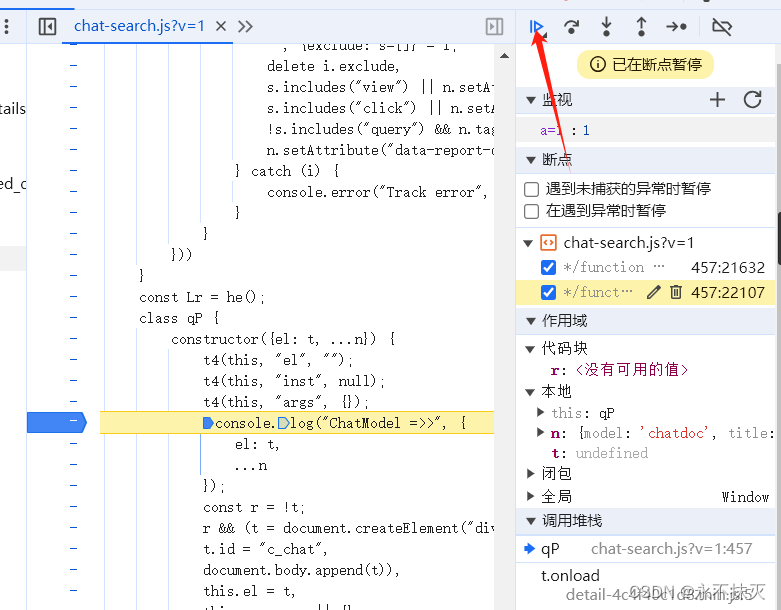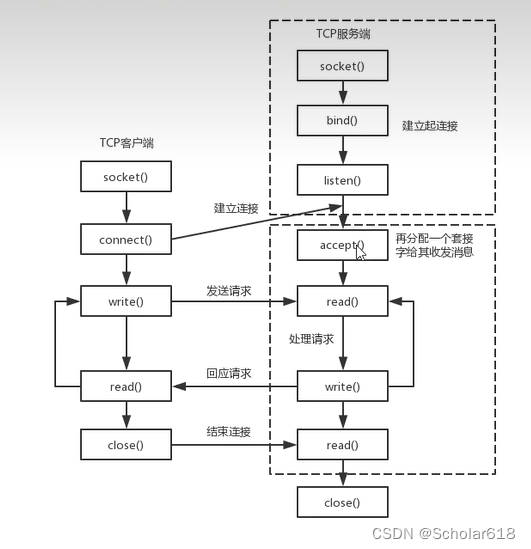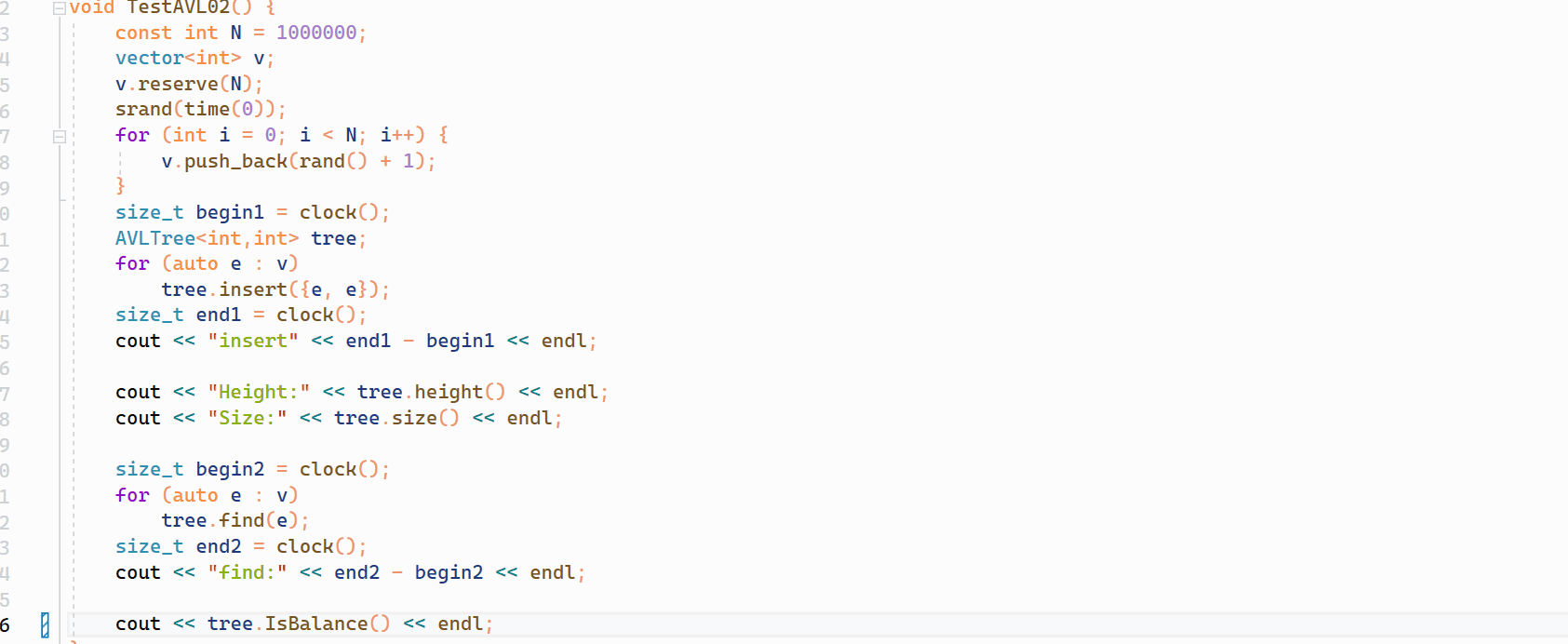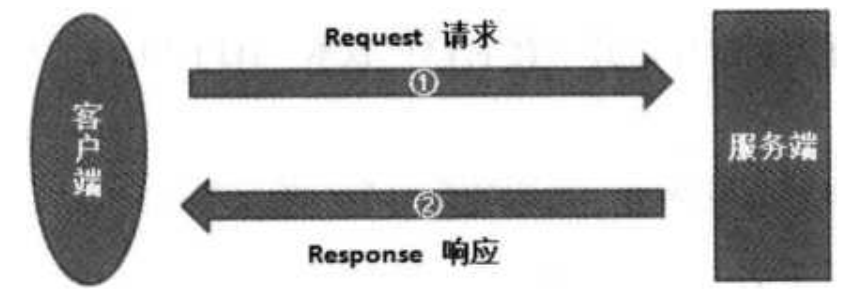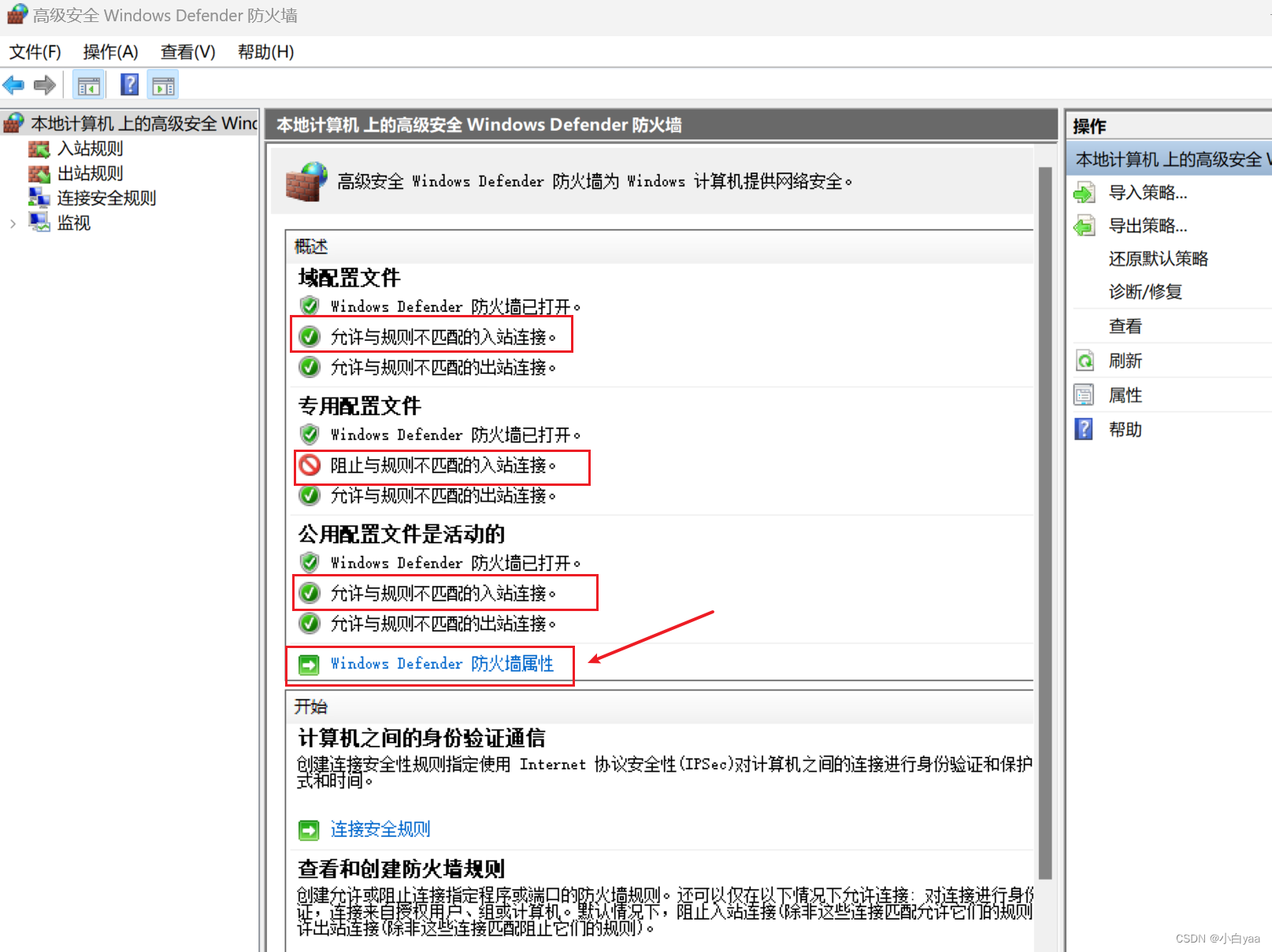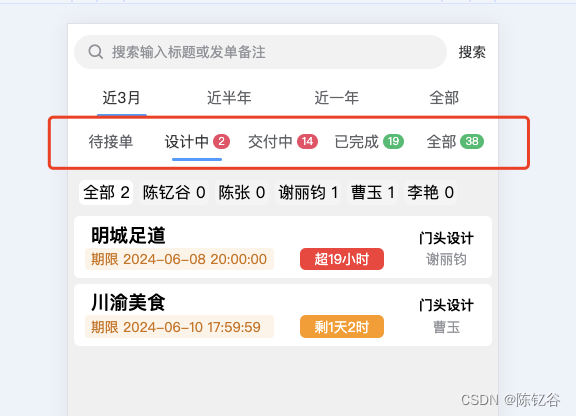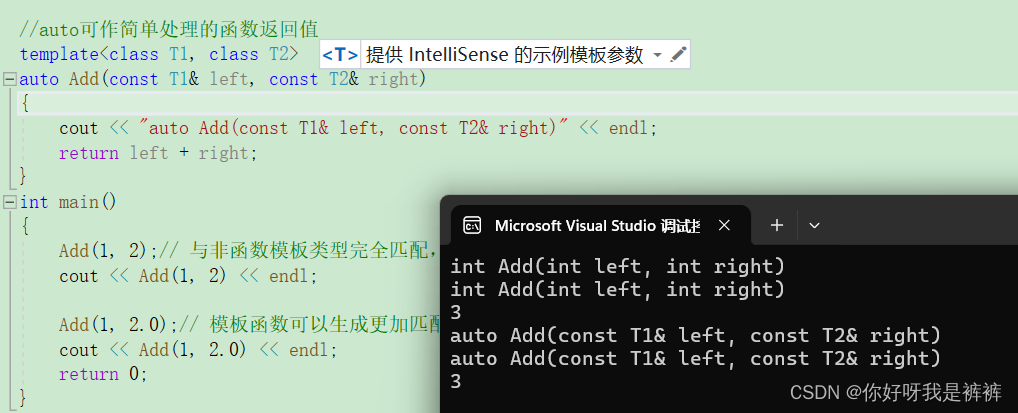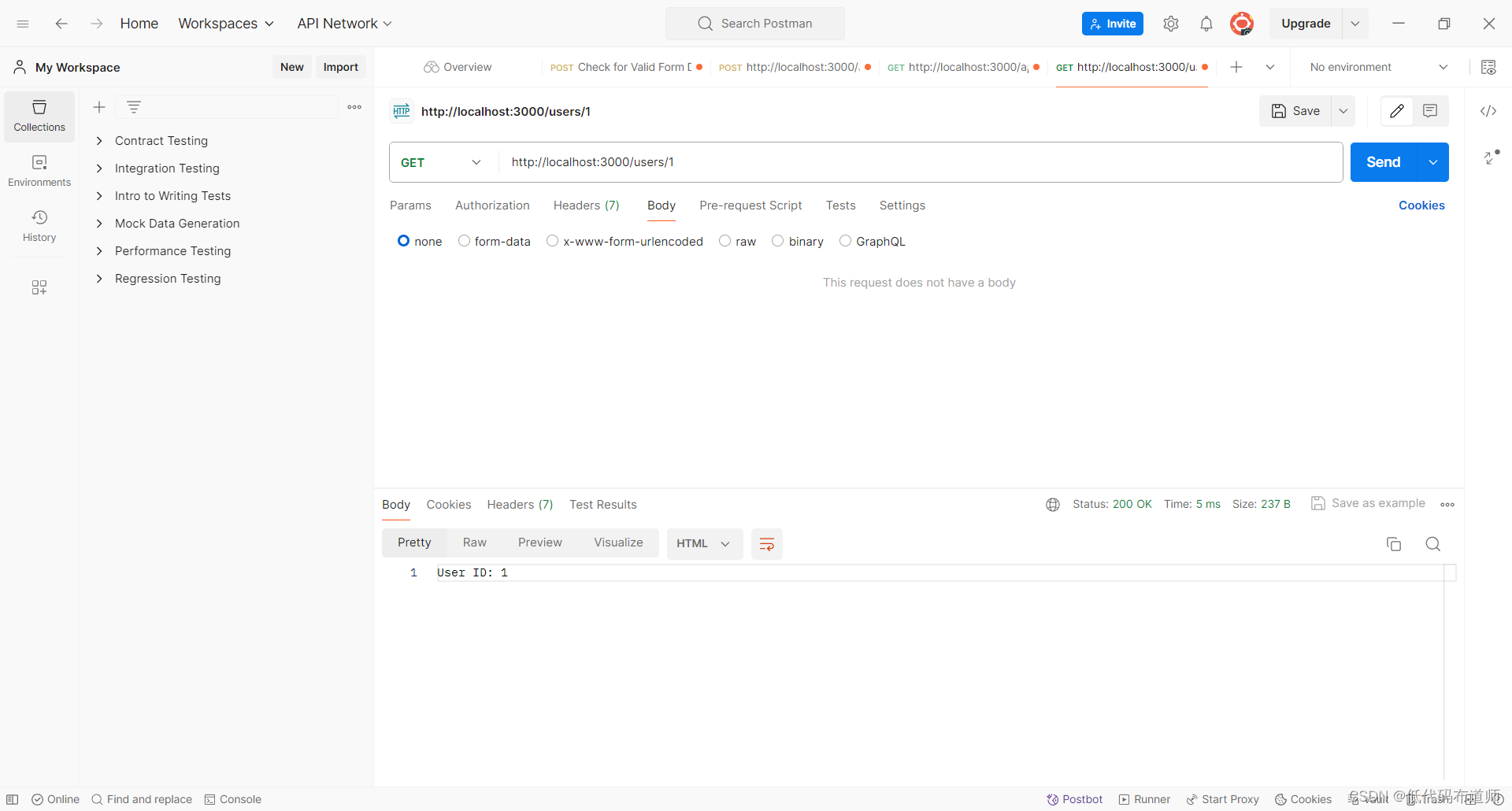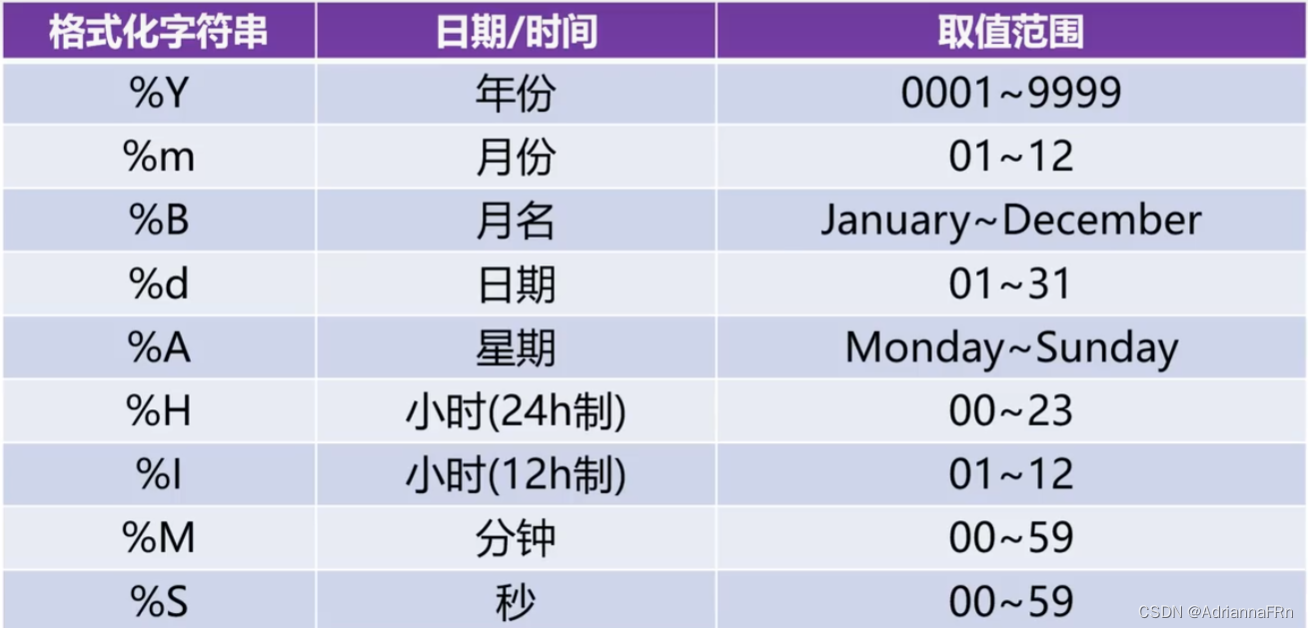目录
1 文件的时间属性简介
2 utime()函数
2.1 utime()函数简介
2.2 示例程序
3 utimes()函数
3.1 utimes()函数简介
3.2 示例程序
4 futimens()函数
4.1 futimens()函数简介
4.2 示例程序
5 utimensat()函数
5.1 utimensat()函数简介
5.2 示例程序
1 文件的时间属性简介
在Linux系统中,文件的时间属性通常与文件的状态信息一起存储在文件的inode中。在<sys/stat.h>头文件中,结构体struct stat用于存储文件的状态信息,包括时间属性。以下是struct stat中与时间属性相关的成员变量:
| st_atime | 文件的最后访问时间(Access Time),访问指的是读取文件内容,文件内容最后一次被读取的时间。 |
| st_mtime | 表示文件的最后修改时间(Modification Time),文件内容发生改变,譬如使用 write()函数写入数据到文件中。 |
| st_ctime | 文件的最后状态改变时间(Status Change Time),状态更改指的是该文件的 inode 节点最后一次被修改的时间,譬如更改文件的访问权限、更改文件的用户 ID、用户组 ID、更改链接数等。 |
下面表列出了一些系统调用或 C 库函数对文件时间属性的影响,有些操作并不仅仅只会影响文件本身的时间属性,还会影响到其父目录的相关时间属性。
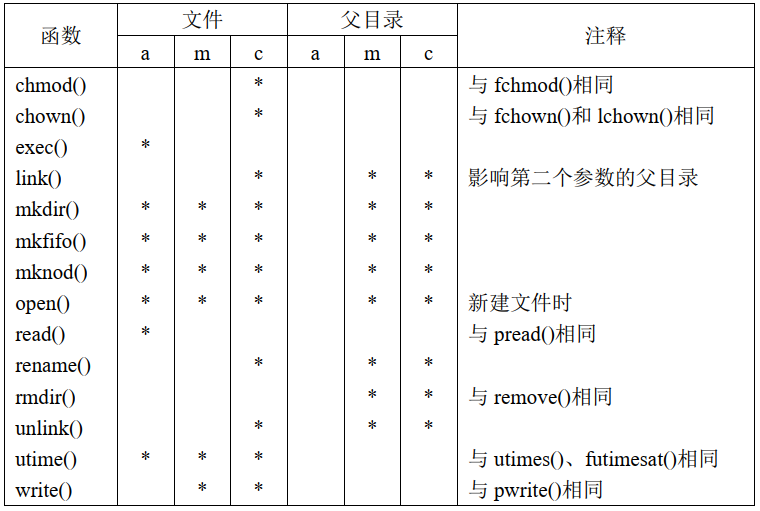
不同函数对文件时间属性的影响
2 utime()函数
2.1 utime()函数简介
utime()函数在Linux系统中用于设置文件的访问时间(access time)和修改时间(modification time)。这个函数允许你指定文件的访问时间和修改时间,而不是依赖系统自动更新的时间。函数原型如下:
#include <utime.h>
int utime(const char *filename, const struct utimbuf *times);filename:指定要修改时间属性的文件的路径。times:指向struct utimbuf结构的指针,该结构包含了要设置的访问时间和修改时间。如果times为NULL,则系统将当前时间作为访问时间和修改时间。
struct utimbuf定义如下:
struct utimbuf {
time_t actime; // 访问时间
time_t modtime; // 修改时间
};该结构体中包含了两个 time_t 类型的成员,分别用于表示访问时间和内容修改时间, time_t 类型其实就是 long int 类型,所以这两个时间是以秒为单位的,所以由此可知, utime()函数设置文件的时间属性精度只能到秒。
同样对于文件来说,时间属性也是文件非常重要的属性之一,对文件时间属性的修改也不是任何用户都可以随便修改的, 只有以下两种进程可对其进行修改:
- 超级用户进程(以 root 身份运行的进程) 。
- 有效用户 ID 与该文件用户 ID(文件所有者)相匹配的进程。
- 在参数 times 等于 NULL 的情况下,对文件拥有写权限的进程。
2.2 示例程序
下面的示例程序,接受一个命令行参数作为文件名,并尝试更新这个文件的时间属性:
#include <stdio.h>
#include <stdlib.h>
#include <utime.h>
#include <time.h>
#include <string.h>
int main(int argc, char *argv[]) {
// 检查命令行参数数量
if (argc != 2) {
fprintf(stderr, "Usage: %s <filename>\n", argv[0]);
exit(EXIT_FAILURE);
}
// 获取命令行参数中的文件名
const char *filename = argv[1];
// 获取当前时间
time_t current_time = time(NULL);
// 创建utimbuf结构体并设置时间
struct utimbuf new_times;
new_times.actime = new_times.modtime = current_time;
// 使用utime()函数更新文件时间
if (utime(filename, &new_times) == -1) {
// 如果utime()调用失败,打印错误信息
perror("Error updating file times");
exit(EXIT_FAILURE);
}
printf("File '%s' access and modification times have been updated to: %s", filename, ctime(¤t_time));
return 0;
}程序首先检查命令行参数的数量,如果参数数量不正确,程序将打印正确的用法并退出。进一步获取当前时间,设置utimbuf结构体,并调用utime()函数来更新文件的时间属性。如果utime()调用失败,程序将使用perror()打印错误消息并退出。如果调用成功,程序将打印一条消息,告知用户文件的时间属性已被更新。运行结果如下:
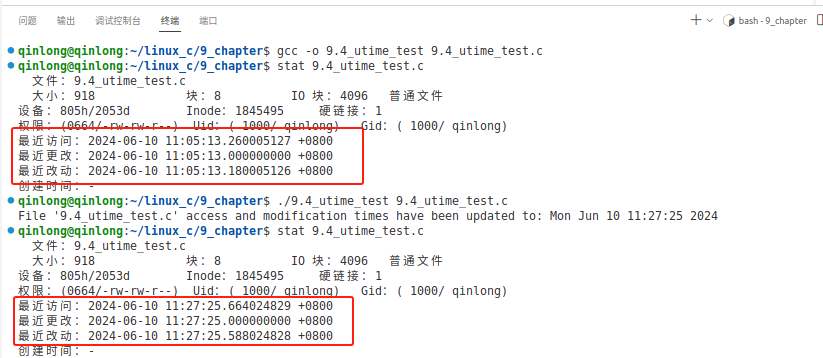
3 utimes()函数
3.1 utimes()函数简介
utimes()函数用于设置文件的访问时间(access time)和修改时间(modification time)的函数。与utime()函数不同,utimes()允许你指定更精确的时间,包括纳秒级别的精度。函数原型如下:
#include <sys/time.h>
int utimes(const char *filename, const struct timeval times[2]);filename:指定要修改时间属性的文件的路径。times:指向包含两个struct timeval结构的数组的指针。第一个struct timeval用于设置访问时间,第二个用于设置修改时间。如果times为NULL,则系统将当前时间作为访问时间和修改时间。
struct timeval定义如下:
struct timeval {
time_t tv_sec; // 时间的秒部分
suseconds_t tv_usec; // 时间的微秒部分
};3.2 示例程序
下面是一个使用utimes()函数的示例程序:
#include <stdio.h>
#include <stdlib.h>
#include <sys/time.h>
#include <unistd.h>
#include <string.h>
int main(int argc, char *argv[]) {
if (argc != 3) {
fprintf(stderr, "Usage: %s <filename> <time>\n", argv[0]);
exit(EXIT_FAILURE);
}
const char *filename = argv[1];
const char *time_str = argv[2];
// 将字符串时间转换为timeval结构
struct timeval new_times[2];
if (sscanf(time_str, "%ld.%ld", &new_times[0].tv_sec, &new_times[0].tv_usec) != 2) {
fprintf(stderr, "Invalid time format.\n");
exit(EXIT_FAILURE);
}
new_times[1] = new_times[0]; // 访问时间和修改时间相同
// 使用utimes()函数更新文件时间
if (utimes(filename, new_times) == -1) {
perror("Error updating file times");
exit(EXIT_FAILURE);
}
printf("File '%s' access and modification times have been updated.\n", filename);
return 0;
}示例程序首先检查命令行参数的数量,确保用户提供了文件名和时间字符串。然后将时间字符串转换为timeval结构,这里假设时间字符串的格式为秒和微秒的组合,例如"1234567890.987654"。接着,我们使用utimes()函数来更新文件的访问时间和修改时间。如果转换失败或utimes()调用失败,程序将打印错误消息并退出。运行结果如下:
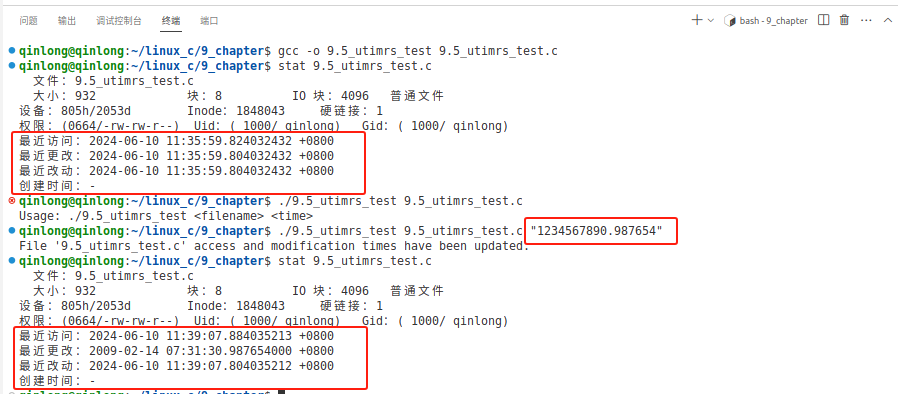
4 futimens()函数
除了上面给大家介绍了两个系统调用外,futimens()和 utimensat()函数功能与 utime()和 utimes()函数功能一样,用于显式修改文件时间戳,这两个系统调用相对于 utime 和 utimes 函数有以下三个优点:
-
高精度时间设置:
futimens()和utimensat()允许以纳秒为单位设置文件的时间戳,而utimes()只提供微秒级的精度,这是对时间设置精度的一个显著提升。 -
单独设置时间戳:这两个系统调用可以独立地设置访问时间或修改时间,用户可以只更改其中一个时间戳而保持另一个不变。使用
utime()或utimes()时,如果要单独设置一个时间戳,需要先使用stat()获取另一个时间戳的当前值,然后再进行设置。 -
灵活设置当前时间:
futimens()和utimensat()可以单独将任一时间戳设置为当前时间,而使用utime()或utimes()时,如果将times参数设置为NULL,则会将所有时间戳都设置为当前时间,无法只更新其中一个。
4.1 futimens()函数简介
futimens()函数是用于设置文件的时间属性,特别是针对已经打开的文件描述符。这个函数允许你为文件的访问时间(access time)和修改时间(modification time)设置精确到纳秒的时间戳。函数原型如下:
#include <sys/stat.h>
int futimens(int fd, const struct timespec times[2]);fd:文件描述符,是一个整数值,表示要设置时间属性的打开文件。times:指向包含两个struct timespec结构的数组的指针。第一个struct timespec用于设置访问时间,第二个用于设置修改时间。如果times为NULL,则系统将当前时间作为访问时间和修改时间。
struct timespec定义如下:
struct timespec {
time_t tv_sec; // 时间的秒部分
long tv_nsec; // 时间的纳秒部分
};4.2 示例程序
下面是一个使用futimens()函数的示例程序:
#include <stdio.h>
#include <stdlib.h>
#include <sys/stat.h>
#include <fcntl.h>
#include <unistd.h>
#include <errno.h>
#include <time.h> // 包含time.h头文件
int main(int argc, char *argv[]) {
if (argc != 2) {
fprintf(stderr, "Usage: %s <filename>\n", argv[0]);
exit(EXIT_FAILURE);
}
const char *filename = argv[1];
int fd;
// 打开文件以获取文件描述符
fd = open(filename, O_RDONLY);
if (fd == -1) {
perror("Error opening file");
exit(EXIT_FAILURE);
}
// 创建timespec结构体并设置当前时间
struct timespec new_times[2];
new_times[0].tv_sec = time(NULL); // 获取当前时间的秒数
new_times[0].tv_nsec = 0; // 纳秒部分设置为0
new_times[1] = new_times[0]; // 修改时间和访问时间设置为相同
// 使用futimens()函数更新文件时间
if (futimens(fd, new_times) == -1) {
perror("Error updating file times");
close(fd);
exit(EXIT_FAILURE);
}
printf("File '%s' access and modification times have been updated.\n", filename);
// 关闭文件描述符
close(fd);
return 0;
}程序首先检查命令行参数的数量,确保用户提供了文件名。然后,我们使用open()函数以只读模式打开文件,并获取文件描述符fd。接着创建了两个timespec结构体实例,并将它们设置为当前时间。然后调用futimens()函数来更新文件的访问时间和修改时间。程序运行结果如下:
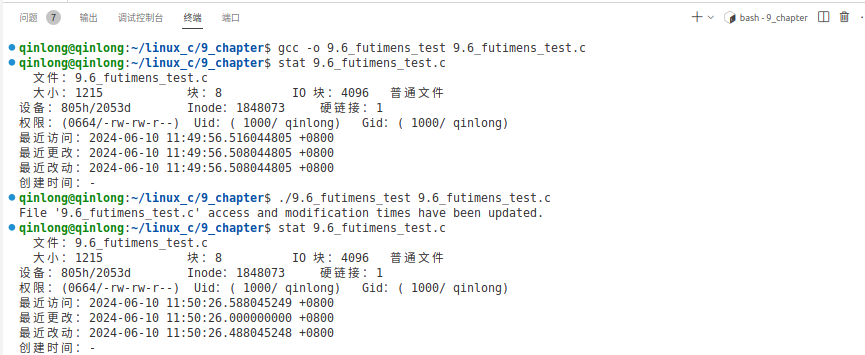
5 utimensat()函数
5.1 utimensat()函数简介
utimensat()函数允许以纳秒级的精度来设置文件或目录的时间戳。这个函数提供了比传统的utime()和utimes()函数更高的时间设置精度,并且具有更多的灵活性。函数原型如下:
#include <sys/stat.h>
int utimensat(int dirfd, const char *pathname, const struct timespec times[2], int flags);dirfd:该参数可以是一个目录的文件描述符,也可以是特殊值 AT_FDCWD;如果 pathname 参数指定的是文件的绝对路径,则此参数会被忽略。pathname:这是要修改时间戳的文件或目录的路径。times:这是一个指向struct timespec数组的指针,包含两个时间戳,分别用于设置访问时间(times[0])和修改时间(times[1])。如果times为NULL,则时间戳将被设置为当前时间。flags:这是一些标志位,可以是以下值的组合:AT_SYMLINK_NOFOLLOW:如果pathname是一个符号链接,则utimensat()将修改链接指向的目标而不是链接本身。
5.2 示例程序
下面的使用utimensat()函数示例程序接受一个文件名和一个时间字符串作为命令行参数,并尝试将该文件的访问和修改时间设置为指定的时间。时间字符串的格式应该是秒.纳秒。
#include <stdio.h>
#include <stdlib.h>
#include <sys/stat.h>
#include <fcntl.h>
#include <unistd.h>
#include <errno.h>
int main(int argc, char *argv[]) {
if (argc != 3) {
fprintf(stderr, "Usage: %s <filename> <timestamp>\n", argv[0]);
fprintf(stderr, "Timestamp format: seconds.nanoseconds\n");
exit(EXIT_FAILURE);
}
const char *filename = argv[1];
const char *timestamp_str = argv[2];
char *dot;
unsigned long seconds, nanoseconds;
// 解析时间字符串
seconds = strtoul(timestamp_str, &dot, 10);
if (*dot != '.') {
fprintf(stderr, "Invalid timestamp format.\n");
exit(EXIT_FAILURE);
}
// 跳过点号,解析纳秒部分
nanoseconds = strtoul(dot + 1, NULL, 10);
// 创建timespec结构体
struct timespec new_times[2];
new_times[0].tv_sec = seconds; // 访问时间
new_times[0].tv_nsec = nanoseconds; // 访问时间的纳秒部分
new_times[1].tv_sec = seconds; // 修改时间
new_times[1].tv_nsec = nanoseconds; // 修改时间的纳秒部分
// 使用utimensat()函数更新文件时间
if (utimensat(AT_FDCWD, filename, new_times, 0) == -1) {
perror("Error updating file times");
exit(EXIT_FAILURE);
}
printf("File '%s' access and modification times have been updated to: %lu.%09lu\n",
filename, seconds, nanoseconds);
return 0;
}程序首先检查命令行参数的数量是否正确。接,我们解析时间字符串以获取秒和纳秒部分,然后创建timespec结构体并设置相应的时间。最后使用utimensat()函数尝试更新文件的访问和修改时间。如果utimensat()调用失败,程序将打印错误消息并退出。运行结果如下:



